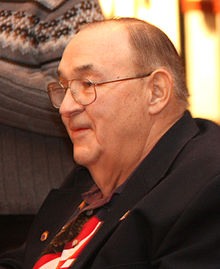Familiar flag, unfamiliar name
 By James Breig
By James Breig
Hosted by Gettysburg Flag Works
Every day in America, millions of people see the handiwork of Robert Heft. But they don’t know who he was or what he did that involved the U.S. flag.
In naming people connected to the history of the flag, Heft should rank with Betsy Ross and Uncle Sam because he designed the 50-star banner that proudly waves over post offices, flaps atop the White House and snaps in the breeze aboard boats.
He came to prominence more than half-a-century ago, when Alaska and Hawaii were entering the Union. There was a need for a redesigned star-spangled banner to replace the 48-star version that Americans had pledged their allegiance to for decades.
The amazing thing about Heft is that he was a teenager when he set to work. As a school project, he glued 100 stars on a blue cloth — 50 on each side — in a staggered pattern. The 48-star flag had been easier to design: six rows of eight stars each. His goal was to add two stars without radically changing the look of the then-current flag.
Heft sent his design to his congressman, who eventually succeeded in getting it adopted. Heft’s teacher had given him a B-minus for his effort but promised that the grade would be raised if his design was adopted by Congress. Of course, he got an A.
The teen became a high school teacher himself and then a college professor, as well as a mayor of his town in Ohio. In addition, he spent much of his time giving talks about his claim to fame and the flag he was devoted to. He once told an interviewer, “If you believe in what you are doing,…never let anybody discourage you. Follow your dreams.”
He literally ran his dream up a flagpole, and everyone is still saluting it.
Heft died in 2009. However, if Puerto Rico ever becomes a state, there’s a chance his name will be back in the news. That’s because he also a designed a 51-star flag.
